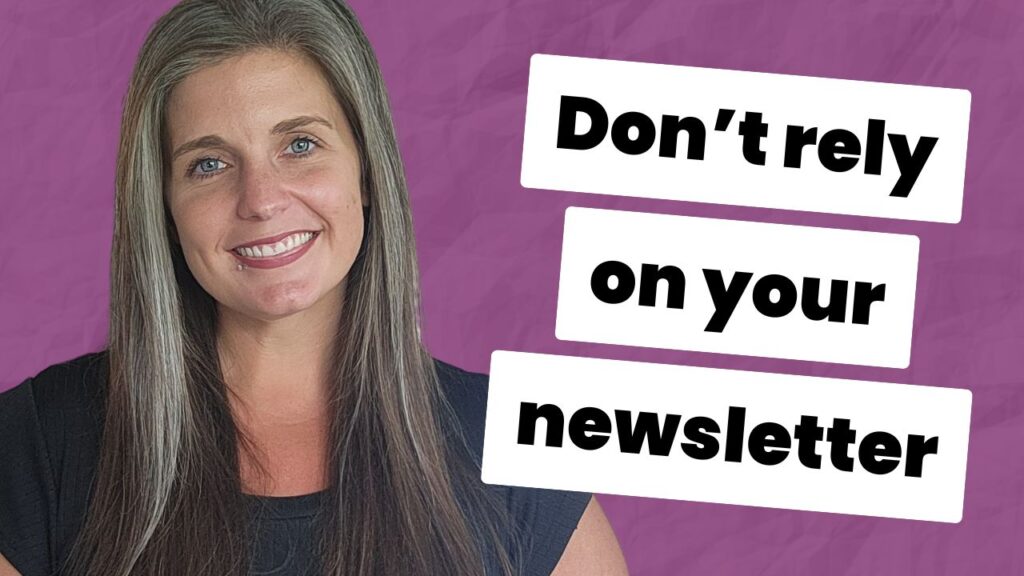What do you do when a launch flops? When a new funnel isn’t converting? Or when your website isn’t pulling in the leads and sales you need to sustain the growth you’re after?
In this video, I’ll show you the simple 3-step process I use as a conversion copywriter to troubleshoot performance problems.
Swipe it for yourself. So you can end the guessing games, make strategic decisions, and quickly see better results.
TRANSCRIPT:
What do you do when you have a recent launch or a new evergreen funnel that either recently flopped or is not performing as well as it should? Or as well as you hoped it would?
Today, we’re going to talk about the first steps you should take if your campaign is not performing so that you can figure out what you need to do to turn it around and start seeing the leads, customers, and clients that you were hoping to see.
Hi, I’m Paige. I am a conversion copywriter.
Part of my job when I work with my clients is figuring out why things aren’t converting.
We want to diagnose our root causes before we design any new strategies or make any changes to the copy or really take any action whatsoever.
Because:
If you don’t know the underlying root causes or you don’t have enough data to make a strong hypothesis about what is the problem with the campaign that you’re focused on, then you are just simply guessing.
When you’re guessing, you are wasting time, effort, resources, money even, with no real strategy behind why you’re changing what you’re changing. And worse, when you actually make those changes, you don’t see results or things get even worse. Right?
So the first thing that I like to do when I’m working with a client, and we have an underperforming campaign is send a non-buyer survey and maybe even run some non-buyer interviews.
The reason I like to run a survey first is because I want a broader perspective, and then the interviews help you dive deeper into a specific context.
So when I’m running a survey, the first thing I’m trying to ascertain is whether or not they were even interested in the offer. If they weren’t, then I want to know why. That might help me figure out if it’s a fit problem – if I have good leads or if I have leads that are coming in that are just fundamentally not in alignment with what we’re trying to sell. And so that can be interesting information to look at.
On the flip side, if they were interested, then I want to figure out what was that thing that was holding them back. Like why didn’t they sign up? So what was that number one obstacle?
That’s an open-ended question that I ask. And the reason I do that is because I do not want to lead them down any particular direction. I want to know what their number one top-of-mind reason was because that is likely the most important thing for that particular respondent.
Then I ask a quick multiple-choice question that helps me figure out what other obstacles are at play here. And then based on those responses, I can ask follow-up questions that help me dive deeper.
So for example, if someone says they didn’t sign up because the price was too expensive, I will likely have a follow-up question so that I can figure out what really is the root cause of that pricing objection.
And from there, I like to set up the survey so that we have the option to interview people if they are willing to speak to us. And that just makes it easier so we can select survey responses that are the most interesting or the most useful for us, and then follow up and do an interview with people who we want to dive deeper into their experience.
The non-buyer survey is always the first step because it helps you figure out where the potential problems are.
Step two is to design a test or multiple tests around the hypotheses that you have to see if performance actually increases.
So it’s a really simple process:
Figure out why people aren’t buying.
Make your hypotheses.
Design a test.
Ccontinue to validate.
So if you take away nothing else from this video today, it’s this:
When you have a campaign that’s not performing… before you dive in and go willy-nilly and start throwing spaghetti at the wall and doing this and doing that and just making yourself crazy and maybe even seeing worse results, the first thing that you should do is run a non-buyer survey.
Then, potentially do some deeper dive into non-buyer interviews.
And then from there, make strategic decisions.
Doing that work first is going to save you more time, more energy, more effort, more money, and also increase the odds that you see better results more quickly.
And if you’d like help figuring out why people don’t buy, click here to request a free consult call.


